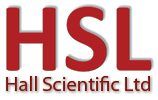Cryomagnetics experience in manufacturing room temperature superconducting magnets (liquid helium wet systems) for advanced research is unmatched.
As with bucket dewar systems, there is a wide variety of room temperature superconducting magnet systems configurations available. Some include solenoids up to 20 Tesla, split-pairs up to 11 Tesla, multiple-axis, and custom designs to your specifications.
The room temperature bore can be configured in the vertical or horizontal plane. Vertical bore configurations are very popular for NMR research, gyrotrons, magnetic separation, and many other applications. Variable temperature cryostats and other stand-alone inserts such as dilution refrigerators are used with vertical room temperature bore systems.
Horizontal room temperature bore systems are popular with Ion Cyclotron Resonance research and ion-trap applications. As with vertical bore configurations, the applications for horizontal bore superconducting magnet systems are almost endless.
Room temperature bore systems are designed with your particular needs in mind. Ultra-low loss, vertical bore NMR systems are designed with very long liquid helium hold times. Magnetic separation systems are designed to handle large forces to the superconducting magnet, while maintaining good liquid cryogen loss performance. Gyrotron systems are designed with strict magnetic field to dewar alignment specifications while meeting stringent liquid cryogen loss performance. No matter what your application, Cryomagnetics can design to your needs and deliver a system to economically and efficiently aid your research.
State of the art Room Temperature Superconducting Magnets

12.0 Tesla Actively Shielded Superconducting Magnet System for ICR.
To minimize liquid helium usage, Cryomagnetics will optimize current lead configurations to match your experiment schedule. For example, superconducting magnets used mainly in persistent mode can be provided with fixed current leads that have as little as 30mL/hour LHe boil off in static mode.
For room temperature superconducting magnets used mainly in swept mode operation, current leads can be optimized so liquid helium usage does not become excessive when high current is applied. Special high-resistance persistent switches can also be installed on these magnets to help minimize liquid helium usage during magnetic sweeps.
In systems that remain in persistent mode for extended periods of time, retractable current leads may be the best solution. High temperature superconducting (HTS) current leads may be advantageous in some room temperature bore applications.
Hall effect and temperature sensors can be installed on the superconducting magnet systems to monitor system status.
Designed with safety in mind, all Cryomagnetics room temperature bore systems are designed to ASME code.
Fourier Transform Mass Spectrometry involves the measurement of ion resonance in a stable magnetic field. Cryomagnetics speciality is optimising the super conducting magnet systems for ICR spectrometers.
For room temperature superconducting magnets and the surrounding technology contact HSL today on Tel:+44 203 004 9895

